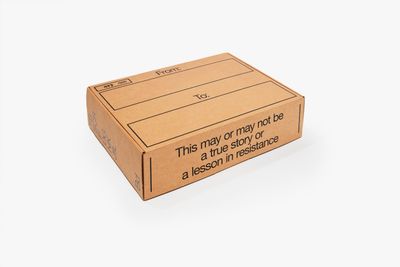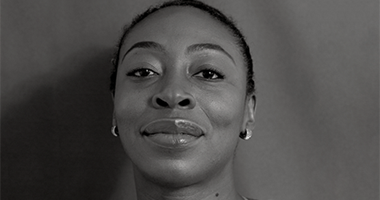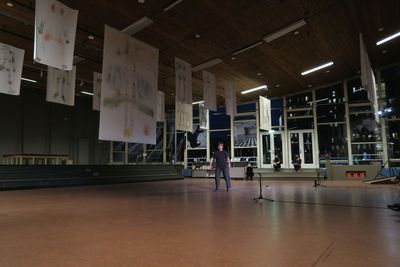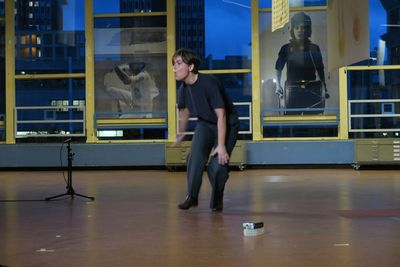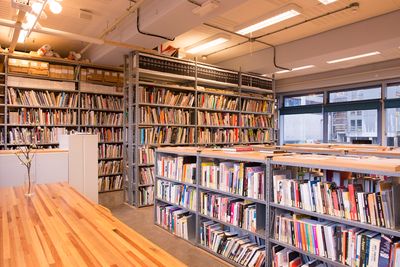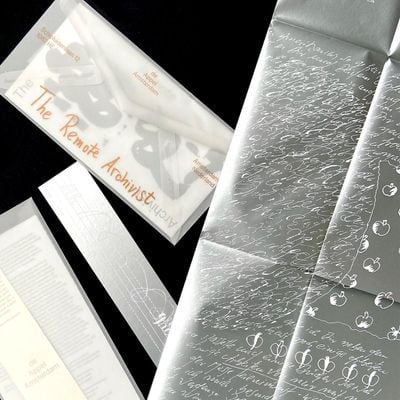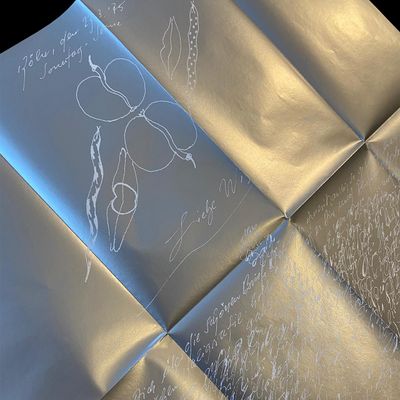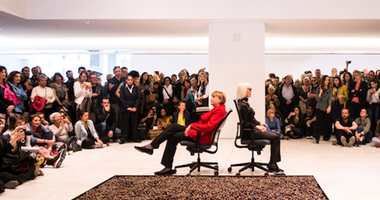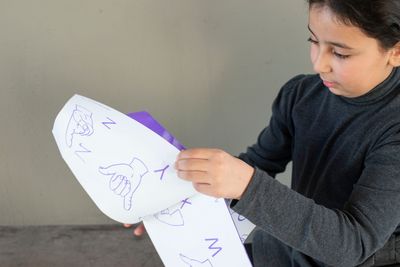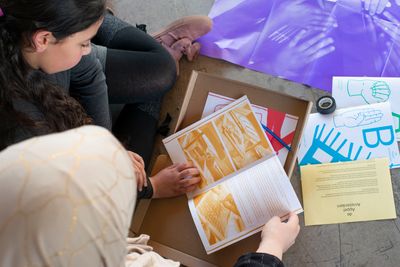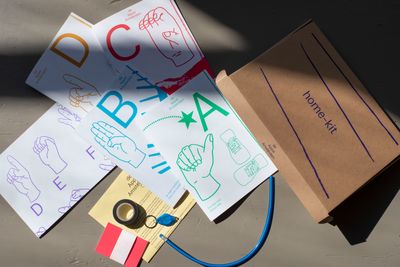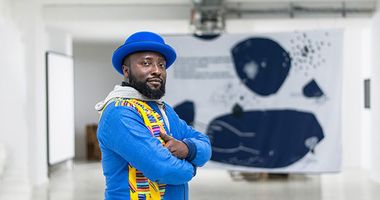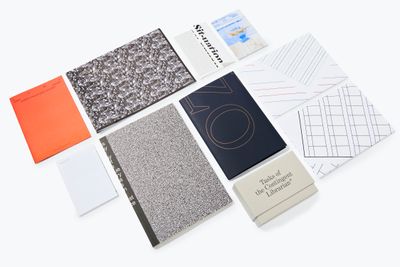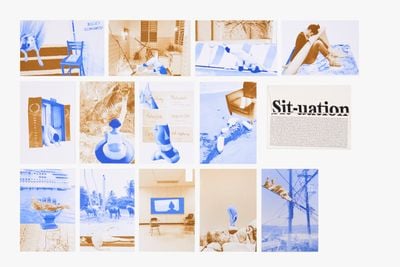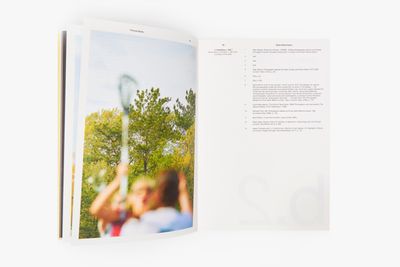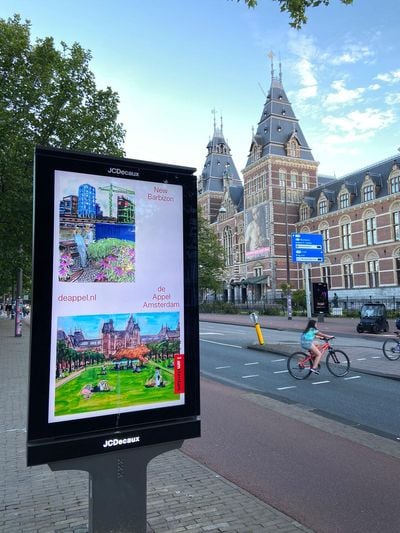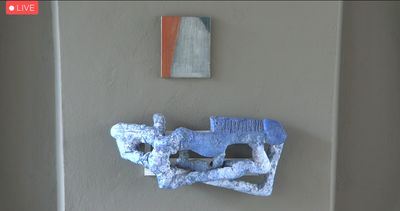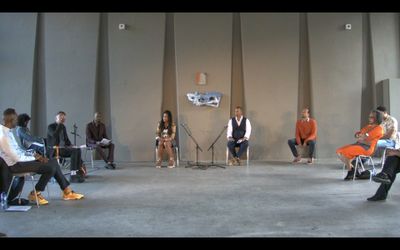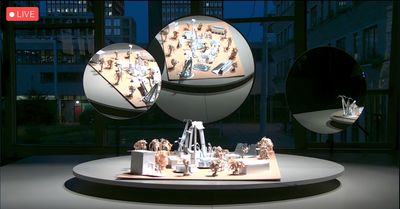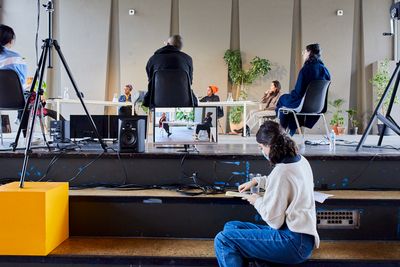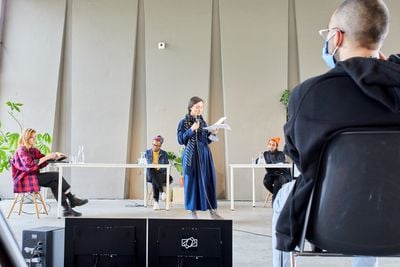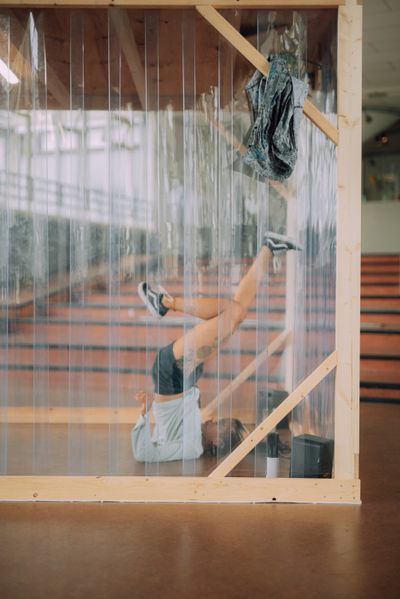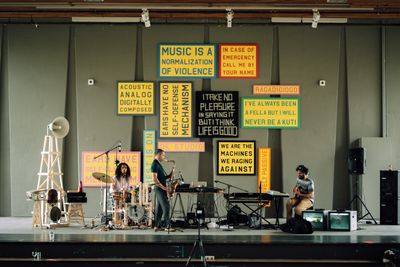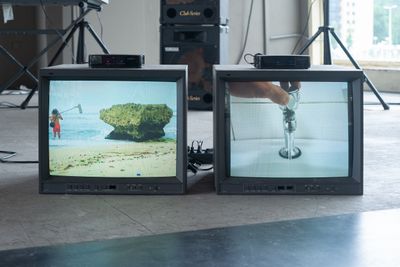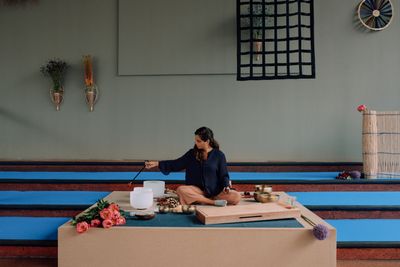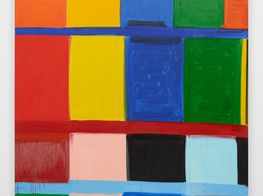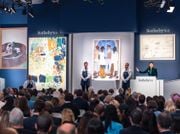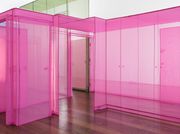de Appel's Monika Szewczyk is Curating the Conditions for Deep Study
Portrait of Monika Szewczyk by Ester Pakovica. Courtesy the artist.

Portrait of Monika Szewczyk by Ester Pakovica. Courtesy the artist.
Monika Szewczyk took up her post as director of de Appel in Amsterdam in May 2019. As an advocate of learning with art, she is leading the institution towards an expanded sense of living processes, making time and space for artists and allies to pose vital questions.
In doing so, Szewczyk draws from her accumulated experience as a curator, educator, editor, and writer. Most recently, she served as curator at documenta 14, the quinquennial art exhibition, which took place in Athens (8 April–16 July 2017) and Kassel (10 June–17 September 2017) and stressed the importance of unlearning in the process of understanding the identity of Europe.
Prior to joining the curatorial team in Athens, Szewczyk was in charge of the exhibition programme at the Reva and David Logan Center for the Arts in Chicago, where she was collaborating with artists such as Pope.L, Irena Haiduk, Dan Peterman, David Schutter, Stanley Whitney, and Otobong Nkanga.
In her current role as director, Szewczyk continues what she has learned in these different contexts, foregrounding the importance of poetry, resourcefulness, and local grounding, as well as the urgency to rethink collections, which in the Netherlands are essentially the product of the country's colonial past.
De Appel is renowned for its Curatorial Programme (CP), which offers a unique opportunity for young curators to gain professional experience. Since its inception in 1994 by Saskia Bos, it has attracted curatorial minds from all over the world to spend ten months of collective practice, testing what art can do.
The second important pillar of the institution is the 47-year-old Archive, which, apart from historical printed matter, is also home to the so-called Collection (Unintended), consisting of artworks and fragments of artists' projects, situations, environments, and performances. It has been led by Nell Donkers, an artist turned archivist, for the past 20 years.
The Educational Initiatives, comprising the third pillar, are led by Education Curator David Smeulders, who is committed to sustainable community building through listening. Under the care of Szewczyk, de Appel is facilitating formats that traverse all three pillars of the institution, accentuating the fluidity and multiplicity of forms that art and learning can take.
In the face of the global pandemic and the restrictions that it imposes on cultural institutions, Szewczyk and her team embraced the situation by reforming the planned projects into formats that were possible under radically changed circumstances. With Day for Night (23 June–4 September 2020), for example, they made space and time to reflect on the current historical moment.
In autumn 2020, the lofty Aula of de Appel, which also serves as an exhibition hall, was turned into a space for self-recovery with a project titled IASI by the Greek performance artist Georgia Sagri (28 September 2020–18 January 2021). Participants of IASI could explore different techniques of breathing in one-to-one sessions with the artist as their guide.
During the subsequent lockdown, the Aula became a studio for transmission, including the three-day seminar, titled Home Is Where The Music Is, by the curatorial team of sonsbeek 20–24, which inaugurated this year's programming that will revolve around the leitmotif of 'getting home'.
The future of de Appel's homebase—a former school building in the fast-changing district of Amsterdam Nieuw West and its community was explored in The Next Episode, a radio programme recorded in the Aula and aired via local RadioSALTO, as well as in the project BERG (Built Environment Researched Group) conducted with design researcher Rosa te Velde, who explored the social transformation of the neighbourhood through the prism of the building's history.
On 21 September, de Appel is opening the exhibition Survival in the afterlife by Lydia Ourahmane—the artist's first solo presentation in the Netherlands. In this conversation, Monika Szewczyk reflects on how the past flows into the present in her programming at de Appel, provides a glimpse into some of the recently realised and upcoming projects, and stresses the importance of creating conditions for deep study.
MBBefore taking on the position of artistic director at de Appel in Amsterdam, you were involved in documenta 14 in Athens and Kassel. In which ways did your work at documenta 14 influence how you run the hybrid institution of de Appel? Could you reflect on the continuity of your curatorial practice in these different contexts?
MSI moved to documenta 14 from the Reva and David Logan Center for the Arts at the University of Chicago, so somehow my experience of Southeastern Europe was also very much informed by the South Side of Chicago.
Quite a few of the artists I first worked with at the Logan Center got invited as artists at documenta 14. But the experience in Athens deepened my understanding of how art and learning relate; how the wisest artists emphasise the limits of knowing, even as they reveal lesser-known aspects of a situation.
I came to Amsterdam because I saw, at the very root of de Appel—I'm thinking of the Archive, the Curatorial Programme, and the Education Initiatives—certain possibilities to continue this great learning. I also have a desire, and this intensified during our bi-located documenta in Athens and Kassel, to reimagine Europe.
Each artwork we produce is a form of deep study. Presented with due care, on its own terms, and in its own time, each work becomes an attractor capable of bringing out new people, and new dimensions of people.
One important project that we undertook at de Appel this year was a reading group of the book The Dream of Europe (2020) that was edited by the poet and translator Mayra A. Rodríguez Castro. It's a selection of poetry seminars and interviews given by Audre Lorde in Berlin between 1984 and 1992.
Audre Lorde introduces herself as a Black feminist, lesbian, mother, warrior, and poet, so right away, she asserts herself as a multiple being. And this idea of multiple being—this sense that you are never one thing; never some kind of passport identity—is something that I really carry into the programming of de Appel.
We spent seven weeks with the book. De Appel's editor Hannah Cheney and Martha Jager, a brilliant researcher in our archive who also comes with programming experience from a poetry foundation in Amsterdam called Perdu, organised with Mayra to invite six other luminaries: Gloria Wekker, Shishani Vranckx, Sayonara Stutgard, Nancy Jouwe, Philomena Essed, and Pamela Sneed to bring Lorde's words to life and to continue the discussions she ignited.
Dagmar Schultz, who invited Lorde to Berlin and wrote a foreword to the book, presented a film about these Berlin years. I want to keep asking how our sense of Europe can multiply, and especially how what Lorde calls 'the hyphenated people of Europe' can make a difference.
MBThe leitmotif that drives your programming this year is 'getting home'. Could you elaborate on your understanding of the concept of home, how does it relate to the question of identity and belonging?
MSThe leitmotifs are kind of code words that we use at the institution to get on the same page with people that we are collaborating with, but they also leave a lot of space for interpretation.
'Getting home' is as pragmatic as it is poetic. Home is Where the Music Is, our lead-off track and open CP seminar for 2021, involved the co-curators of sonsbeek 2020–2024: Amal Alhaag, Aude Christel Mgba, Bonaventure Soh Bejeng Ndikung, Krista Jantowski, and Zippora Elders.
They brought out the grounding power of specific lyrics and music for diasporic or migrant people, which is to say, people who have a multiple, even ambivalent sense of home. I share this experience.
As an institution, we are currently based in the district of Nieuw West. We wish to continue to belong to the neighbourhood and its histories. Rosa te Velde, a social and architectural researcher, who was the exhibition designer of Patricia Kaersenhout's Guess Who's Coming to Dinner Too? (5 October–30 November 2019) is helping us initiate BERG, which stands for 'Build Environment Research Group'.
Her research about our current building as a microcosm of the social transformations of the surrounding neighbourhood over the past 50-plus years is going to be published very soon.
We have also been working with Jaleesa Clows, a young radio programmer who was born and raised in Amsterdam Nieuw-West, to create a radio programme on a community station called SALTO. We called it The Next Episode so different futures for Amsterdam can be imagined from inside our Aula, which looks onto a lot of construction at the moment.
'Getting home' also acknowledges that we literally reach people in their homes. This has been an interesting zone of experiment: our educational department made a really beautiful kit earlier this year that is sent to younger people to play with and explore in their homes. And already when the first lockdown started, our Archive curator Nell Donkers began The Remote Archivist.
This is a piece of mail art, and it should be noted that Nell is an unusual archivist, as she started out as an artist. It is produced with researchers in our archive—they get one side of a broadsheet and Nell selects one image with an artist close to de Appel for the other side. After a test phase, everyone can now subscribe to The Remote Archivist online, and this is important as stories unfold across the issues.
MBWe are in a strange post-pandemic moment; 'post' not in the sense that the pandemic is over, but in the sense that we understand it better and are living with it.
Speaking from the European region, where cultural life and activities have resumed to some kind of normal under protective measures, the experiences of last year—the presence of the virus and the lockdowns and 'social distancing' as measures of its containment, as well as the brutal murder of George Floyd in the U.S.—can be seen as game changers. How did these events affect your curatorial thinking and programming?
MSI think the pandemic produced a certain pause, which helped us reconsider time and how quickly we do things. I did not want to respond to it too quickly, because the problems keep shifting.
I do think we have to reconsider time. There has been a tendency to make transactions and make and break relationships at the speed of a bullet, and we kill something very profound in ourselves by racing this way. It can be very destructive.
We also tend to forget too quickly. George Floyd's murder came after the unpunished killing of many Black men and women at the hands of police—Travyon Martin, the acquittal of his killer having ignited BLM, Tamir Rice, Eric Garner, Michael Brown, Michelle Cusseaux, Sandra Bland, and Breonna Taylor...
I think your community is who you choose to learn from, learn with, and who transforms you.
It is important to name them and also understand that these names stand for many, many more people. The denigration of Black lives—to the point of obliteration from history—has existed in a continuum since the era of transatlantic slavery.
As Saidiya Hartman reminds us in Lose Your Mother (2006), the term 'slave' is rooted in the word Slav. The colonial institution of slavery also has links to the treatment of Slavic people in feudal times. But for Slavic people, Slav relates to the word 'słowa' in Polish, which means 'words'. All this to say we must finds better words to narrate these difficult histories. This is one way how poetry is not a luxury.
Programmatically, the response of de Appel in the summer of 2020 was to reform rather than cancel certain projects. For example, the planned summer exhibition by the New Barbizon collective of plein-air painters became an ongoing online presentation that I call a sketch for an exhibition.
Online, you can still see the full presentation of all their sketches of Amsterdam from the summer of 2019. The members—Zoya Cherkassky-Nnadi, Olga Kundina, Natalia Zourabova, Maria Pomiansky, and Anna Lukashevsky—have honed the ability to be completely present to whatever they are sketching.
I was really interested in how this presentness could affect our consideration of Amsterdam, which is a city continuously distanced from its citizens through tourism and speculation. But in each full-bodied, direct drawing, you glimpse a different kind of connection to the space and time we share. Natalia's daughter, Ester (Pakovica)—who can be seen drawing with her mum in a video we show online—makes me hopeful that a new generation can take us even further along this path.
When we did Day for Night, my interest in art as a way of making history definitely deepened through a heightened awareness of the present as a historical moment. This show was essentially a living, evolving situation in which I asked one artist to present one work and to recommend another artist whom they thought would be important to show at the moment in Amsterdam, for the world.
You could visit in person during the day, and we streamed live for the world from sunset to sunrise. I began with Willem de Rooij, who showed Bouquet #9—his all-white bouquet, which has this eerie sense of life on the verge of death, a sense of mourning as well as celebration, and also the deep ambivalence of whiteness embedded in it.
We recorded interviews with each presentation to delve into these complex works. Willem introduced Avery Preesman, who showed a diptych combining a sculptural relief (Studio Plateau, 2008) and a painted panel (Left Wing, 2008–2009). It's difficult to put words to the capacity of these modest-sized works to hold a space as big as our Aula.
I think it is because they were made slowly and accumulate centuries of reference. Avery then decided to recommend Bianca Stigter, who is not an artist but a journalist and historian, because her recently expanded Atlas van een bezette stad (Atlas of an occupied city), which details the Nazi occupation of Amsterdam, was for him the kind of history-making, that serious art aspires to.
She passed the torch to Quinsy Gario, who actually brought his mother Glenda Mertinus along, and they presented a model of a pivotal demonstration against Shell and the Dutch colonial system on their—and Avery's—native Curuçao in 1969.
They then passed the torch onto mathematician, sociologist, and activist Claudette Van Trikt, who was one of the founding members of the Dolle Minas—a legendary feminist activist group from the Netherlands. Each contribution was an incredibly sensitive response to our profoundly changing times.
MBAt the beginning of this year, you released the final outcome of the CP participants of 2019/2020, which took the form of a boxed multiple entitled This may or may not be a true story or a lesson in resistance. Could you tell us about it in more detail? How did it come about and what does one find inside?
MSWhen it became clear that the lockdown would keep them locked out of our exhibition space, the 2019/2020 CP participants, who I lovingly call 'The Six'—Thomas Butler, Sharmyn Cruz Rivera, Juan Fernando López, Iris Ferrer, Danai Giannoglou, and Naz Kocadere—took the ideas and the relationships that they were forging with artists towards their final exhibition, and decided to transform all this into a kind of multiple.
I pay close attention to the curators of education in my midst because they tend to understand art as so many ways of learning. They understand this better than anyone—except maybe the artists themselves. They also understand community in a real, non-static way.
This has a number of components that have been packaged in a box of great utilitarian beauty. You can use it, unpack it, and try different ways to live with it. One of the contributing artists is Jason Dodge, who was one of the first tutors of this CP group. He offered a beautiful poetry workshop, as he also publishes poetry. He works with the idea that each book that he publishes through his press fivehundred places lands in a different home.
Taking inspiration from this, the CP participants decided to produce one thing that can have 500 lives. They basically turned their exhibition into a multiple that could become 500 exhibitions. My personal box taught me a tonne about emancipatory pedagogies and looking critically at how your schooling can determine you. Sometimes it can also limit you.
One of the key works in this regard is School as a Factory by Allan Sekula. The title of the project is actually a line taken from Sekula's photo-essay, which is published in full inside the book that comes in the box.
Other components become tools of errant study or of resisting the subtle forms of reduction and disempowerment that school can leave you with. Poetry permeates the whole operation.
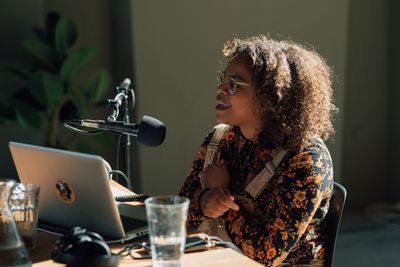
MBHow did you start to facilitate in-person encounters with the public after the multiple lockdowns? Could you elaborate on the process of opening up?
MSWe were really fortunate as Iris Ferrer, our CP Research Fellow for 2020–2021, was working in true fellowship with two really great artists, Kent Chan and Julian Abraham 'Togar', throughout the fall and winter of lockdown. They were after an atmosphere of warmth, both in terms of temperature and in terms of a certain regard between people.
The result, which Iris describes as 'a collection of transmissions for and by people of the equator', was called Love Songs for the Savages (Kundiman para sa mga salbahe), invoking heart-melting songs that served as anti-colonial anthems in her native Philippines.
The full situation began with Heat Waves, a new two-channel video work by Kent alongside his Hot House structure, and culminating in the transportation of Togar's studio from the Rijksakademie into our Aula.
It unfolded in waves, and brought incredible atmosphere and the chance to think critically and to engage all the senses. The waves continue on ragadigiogo.net, which picks up where the Home is Where the Music left off.
During the summer, we presented Formation Camp (7 July–22 August 2021), which was the final outcome of the current cohort of CP participants: Àngels Miralda, Edwin Nasr, Hera Chan, Laura Castro, and Masha Domracheva. The title comes from anarchist practice whereby groups get together to rehearse already possible alternatives to current political structures.
The word 'camp' is significant in ways I'll just set down here, rather than unpack. It's a plural space and time, activated in very different ways at different moments. The distinct political convictions and aesthetics of each participant and their respective comrades and artistic collaborators held their own while co-existing, which was beautiful.
MBOn 21 September you are opening the first solo presentation of the artist Lydia Ourahmane in the Netherlands. Could you provide us with a glimpse into the artist's practice and her show?
MSLydia is working through personally, politically, and spiritually charged materials from her family archive dating back to 1989, when they were a key part of a religious revival in the Kabylia region of Algeria. I'll always be grateful to the arts organisation Mophradat for the introduction, in the frame of The Consortium Commissions. Mphradat Director and CP alumna Mai Abu ElDahab has a very clear vision for enriching the intellectual and also sensible vocabulary that surrounds artists of the Arab world.
De Appel partners on the presentation of Lydia's new work with Portikus in Frankfurt, where the curator Christina Lehnert has brought a very down-to-earth understanding and vital questions. We have been meeting weekly, and this establishment of a rhythm seems very important, given Lydia's multi-dimensional research into matters of the spirit, devotion, and belief.
...we try to acknowledge that learning happens in different ways for different people.
In a very different way from anything we have presented, musical composition—in this case Lydia working with a duo called Yawning Portal—again returns as an anchor amidst disorienting geopolitical circumstances that make a stable sense of home elusive. I did not plan or prompt this—it is just unfolding among artists and curators that do not know each other, which is perhaps all the more beautiful.
MBWhat do you consider important from the perspective of educating curators? Which direction would you like de Appel to take in the years to come?
MSI pay close attention to the curators of education in my midst because they tend to understand art as so many ways of learning. They understand this better than anyone—except maybe the artists themselves. They also understand community in a real, non-static way.
I think your community is who you choose to learn from, learn with, and who transforms you. For 27 years now, de Appel's Curatorial Programme has offered an experience—a life-changing experience—of working together and learning from each other.
This is the benefit of the programme, rather than a degree on a piece of paper. It's about something that is deep in you. It's also a growing community. You get to know people who are very different from you and hopefully you also get to know different facets of yourself.
What the participants produce together changes the very DNA of our institution; it will live on in the Archive and it also lives on in everyone who has taken part. It's difficult to predict the future but I can say I'm determined to grow de Appel gradually, into a wiser version of itself, with people who are genuinely curious.
At de Appel there is always an open invitation to learn together, and we try to vary this through the activities of our Archive, the CP, and the Educational Initiatives. These are all rather different forms of learning, and so we try to acknowledge that learning happens in different ways for different people.
Each artwork we produce is a form of deep study. Presented with due care, on its own terms, and in its own time, each work becomes an attractor capable of bringing out new people, and new dimensions of people.
Even if I think there is a need to be quite modest about how many people you can truly connect to, or how much you can produce at any given time, I do feel that if you relax and put yourself in that learning mode, some kind of magic happens. —[O]


